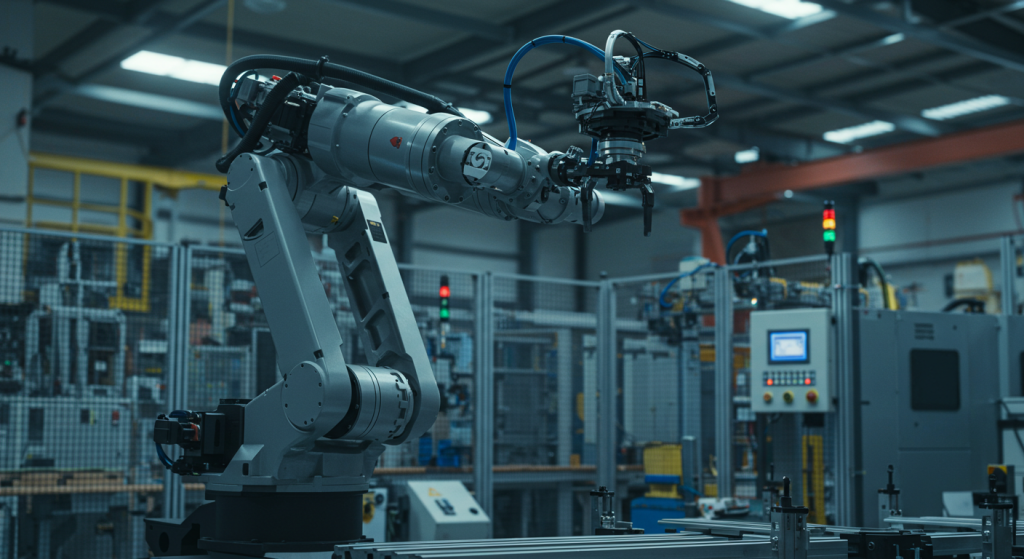Parallel Robots for Industrial Automation: Boost Speed
What are Parallel Robots?
Parallel robots (also known as parallel manipulators) are robots that possess arms (or legs) arranged in a parallel configuration. While standard serial robots possess arms that connect in a series, a parallel robot features a set of interconnected arms that provide a different means of manipulating the end effector (the robot's working tool or mechanism). Such an arrangement creates a specific benefit for speed, stability, and precision. The most common form of parallel robot is the delta robot, which is a high-speed robotic arm designed for pick-and-place applications.
Warsonco: A World-Leading Brand in Parallel Robots for Industrial Automation
Warsonco Robotics is a globally established brand for parallel robots in industrial automation. Warsonco is a household name for reliable, high-performance, precision automation solutions across diverse industrial applications, from food and beverage to pharmaceuticals to consumer electronics. The Warsonco Delta Robot series—WSC 600DJ/800DJ/1000DJ was crafted for use at high performance in high-tech production settings, providing cost-effective precision automation solutions for manufacturers looking to enhance their profit margins.
High-Speed Operation for Maximum Productivity
The Warsonco Delta Robot series runs at high speed with an output capability of 120 packs per minute (PPM). With the Warsonco Delta series speed, end-users will obtain effective packaging automation with pick-and-place operations. The Warsonco Delta series is ideal for food, pharmaceuticals, and any other operation requiring high-speed function in their production environments.
Cost Efficiency of Automation
One of the critical considerations in an industrial environment is cost-effectiveness. The Warsonco Delta Robot series boasts cost-effective alternatives without neglecting the quality of performance. Warsonco parallel robots for industrial automation come at competitive pricing to appeal to small and large businesses alike.
Easy to Use for Simple Integration
Operation and control are user-friendly, meaning easy operation with minimal training, allowing companies to quickly utilize the Warsonco Delta Robot and integrate it into existing production without excessive operational downtime focused on the transition to faster, more automated systems. In addition, low ease of use translates to low maintenance as operators do not need to intervene significantly when the Warsonco Delta Robot is up and running.
Low Maintenance for Long-Term Reliability
Warsonco Delta Robot requires minimal maintenance courtesy of a robust robot. Built not to wear down in more demanding manufacturing settings, these robots are sure to last longer with less downtime for part replacement and lower maintenance requirement needs, creating lower costs for a better long-term return on investment on any manufacturing floor.
Reliability is assured through ISO and CE certification, so compliance with international health, welfare, safety, quality, and performance standards is already in place for the best usability results. Warsonco parallel robots are robust for years of worry-free and reliable operations.
World-Class Support and Warranty
All customer and client needs are managed by an in-house support team, a 1-year warranty, and free support for life; troubleshooting, failure, and maintenance solutions only add to the value of the robotic assembly line integration.
Yet with Warsonco, your business can be assured that it not only has the newest technology in-house, but also ongoing support to guarantee their industrial automation parallel robots will function properly for years to come. Warsonco has the tools, people, and resources to assist any complicated automation request from enterprise level to small business expansion.

Industrial Automation Benefits of Parallel Robots
There are various benefits when it comes to using parallel robots for industrial automation. Here are just some of the reasons they've grown in popularity:
Speed and Throughput
Parallel robots can operate at extremely high speeds thanks to their kinematic structure. They're ideally suited for pick-and-place or packaging automation applications. They can help shorten cycle times and improve throughput for seamless large-scale production line integration.
Precision and Accuracy:
For those robotic applications that require super precise robotics, parallel robots are the way to go. Their configuration is inherently rigid to limit error, making them great for automated inspection as well as electronics assembly and pharmaceutical automation.
Manufacturing Flexibility:
Parallel robots, particularly planar and spatial parallel robots, have amazing manufacturing flexibility. They can be repositioned and reoriented to accomplish many different tasks, which makes them a perfect match for flexible manufacturing systems that require rapid reconfiguration.
Lower Cycle Times:
Parallel robots do a great job reducing cycle times, which can be advantageous in situations where industrial throughput is needed. Their capacity for faster operation without losing precision can render significant savings.
Increased Payload Capacity:
Despite being smaller and more compact, parallel robots can accommodate larger payload capacities; they have a more durable structure and superior motion control abilities. This is valuable in industries like automotive assembly and robotic machining.
The Future of Parallel Robots in Industrial Automation
The future of parallel robots in industrial automation looks bright. As digital manufacturing and smart factories expand, the demand for parallel robots will only increase. In addition, with supporting technologies like machine vision, robot control, and collaborative robots, parallel robots can operate in more significant roles with humans in the industrial environment. Furthermore, with the growth of AI and digital twins, more proactive, intelligent hands-on, or real-time control of parallel robots will be possible, as AI can analyze the task and provide instant changes to the dynamics for improved efficiency.
Conclusion:
Industrial automation is increasingly being transformed by parallel robots, providing a level of speed, strength, and accuracy that has not been seen before. Whether you need packaging automation, robotic machining, assembly line automation, or simply a way to improve your automated experience or an entirely new solution, parallel robots are the answer. As we march into the future, these are the robots that will be critical in advancing the manufacturing revolution.
Need more information about parallel robots for your industrial automation? Visit Warsonco Robotics. Learn how we can place the right robotic solution for your automation needs.















